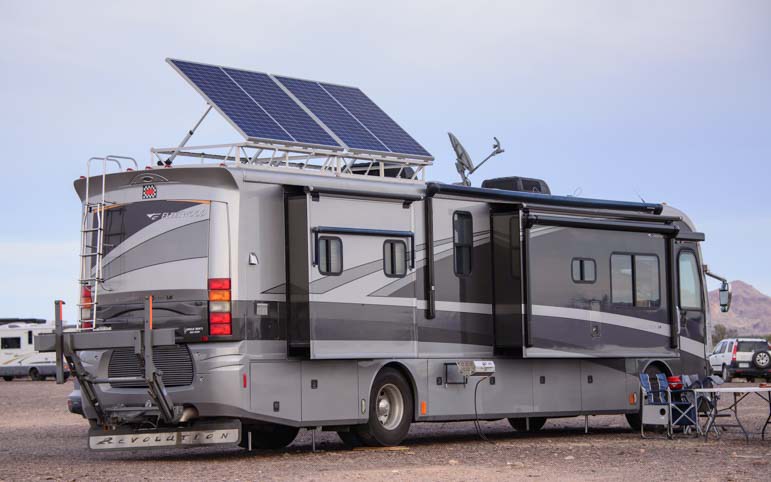The main decisions you need to make in the building process for your motorhome revolve around range, power and recharge time. Your battery will determine your overall success at this lifestyle, but we can turn to Tesla for help on this. Tesla's work toward battery-powered vehicles makes this motorhome feasible. Below is the guidance you'll need when working with your motorhome as well as overall costs. When you compare that to the cost of a standard home or accumulated rent, you'll realize how attractive a solar-powered motorhome becomes!
Range
To understand the possibilities that exist one needs only to look at the latest Tesla P90. It has 762 HP and a range of 253 miles. So, In theory, if we just want 300 HP then using the same battery we should get a range of 642 miles, and at 60 MPH that should be over 10 hours!
Powering your motorhome
Research shows that many motor homes have gas engines that are rated at or about 300 horsepower. It turns out that a 3 phase 460 volt AC motor is readily available from many suppliers. An example is a simple search on EBay. RPM varies but 1800 RPM is quite common and, as you know, is nearly the same as the RPM of a gas engine at cruising speed.
The next challenge is to cope with the power in amps needed to produce 300 horse power. Electric motors draw 750 watts per HP so the number of watts needed is ¾ times 300 or 225,000 watts. At 460 volts that will result in a current of almost exactly 490 amps. That current must be connected between the battery bank and the VFD by heavy copper bus bars. Bus bar tables on-line show that if one wants to limit the increase in the temperature of the bar to 30 degrees C (86 F) then a bar of copper that is 3/8 thick and 1 inch wide is recommended.
When replacing a gas engine with an electric motor it is necessary to replace the mounting hardware and the connection to the transmission shaft and the gas pedal. The frame used for 300 HP motors is technically termed a 449T and it is almost exactly 2 feet high and 2 feet long. It will be necessary to add a mounting brace to the front of the transmission and then add a platform for the motor.
Another detail is the speed control design. 3 phase speed controllers are easy to find. They are known as VFD or variable frequency drives and they are available from many sources.
Now, the reality of purely solar recharge is that a motor home is about 8 feet wide and 40 feet long and about 8 feet high. One panel is just about 18 square feet so we can get just over 35 panels on. That would get us 10,666 watts best case. In one hour we could expect 10.6 KWatts. We need 225 kilowatts and if we are going to use it for 10 hours we need 2250 kilowatt hours. So at 10.6 KW per hour we need to charge for about 225 hours. At 10 hours of charging per day in the summer that is less than a month. It is clear that using solar power alone for battery charging is the least efficient but it is possible.
In summary, here are the costs if we start with a $50,000 motor home
- $50,000 for motor home
- $10,500 for solar panels
- $10,000 for battery
- $9,000 for the motor
- $8,000 variable frequency drive
- $5,000 misc parts
- $92,400 Total
Have you considered building and living in a solar-powered motorhome?
Article and Photo Source: The Prepper Journal


